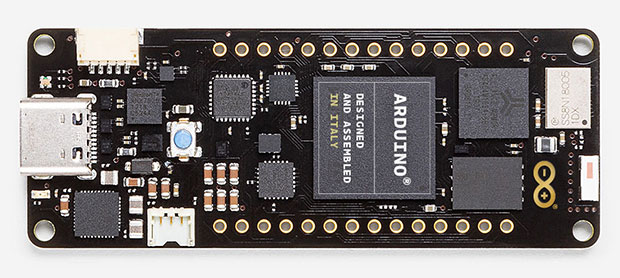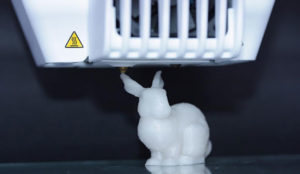Arduino on Tuesday announced a new low-code Internet of Things application development platform at CES 2020 in Las Vegas. It also introduced the low-power Arduino Portenta H7 module, a new family of Portenta chips for a variety of hardware applications.
Arduino has achieved prominence as a go-to developer of an innovation platform for connecting IoT products. Its open source microcontroller platform simplifies the creation of modular hardware to power everyday objects that are smart and connected.
The combination of a low-code application development platform with modular hardware enables users to design, build, measure and explore various prototypes in a single day. This process lets companies eliminate expensive consultations and lengthy integration projects.
Arduino’s offerings build on the considerable work Arduino has performed and the success it has achieved in developing microcontrollers and other modules, noted Charles King, principal analyst at Pund-IT.
Given the amount of buzz IoT has generated at CES, Arduino chose a good time and venue for its announcement, he added.
“In early-stage markets, swift time to market can be critically important. By simplifying application and hardware product development, Arduino should provide tangible benefits to customers focused on IoT,” King told LinuxInsider.
IoT Building Blocks
Arduino’s solution is built on Arm Pelion technology. It gives users simplicity of integration with a scalable, secure, professionally supported service.
Arduino’s production-ready IoT hardware and Portenta modules are “really disruptive,” noted Arduino CEO Fabio Violante.
“Among the millions of Arduino customers, we’ve even seen numerous businesses transform from traditional ‘one-off’ selling to subscription-based service models, creating new IoT-based revenue streams with Arduino as the enabler,” he said.
The availability of a huge community of developers with Arduino skills is also an important plus. It gives them the confidence to invest in Arduino’s technology, Violante added.
Portenta Features
Arduino Portenta H7 is a complete tool kit for building an IoT hardware platform. The new Arduino Portenta family is designed for demanding industrial applications, AI edge processing and robotics. It features a new standard for open high-density interconnects to support advanced peripherals.
The first module in this family is the Arduino Portenta H7. It has a 32-bit dual-core processor comprised of Arm Cortex-M7 and Cortex-M4 cores operating at 480MHz and 240MHz, respectively, with industrial temperature range (-40 to 85C) components. The modules target applications that require significant computing power but have tight power constraints.
The Portenta H7 is capable of running Arduino code, Python and JavaScript. It features a crypto-authentication chip and communications modules for WiFi, Bluetooth Low Energy and LTE, as well as Narrowband IoT. These features make it accessible to an even broader audience of developers.
Portenta H7 is directly compatible with most Arduino libraries. It offers new features that will benefit makers. These include DisplayPort out, fast multichannel ADC and high-speed timers.
The new Arduino Portenta H7, now available for pre-order on the Arduino online store, is priced from US$49.99 to $99.99. Its estimated delivery date is late February.
Disruptive Influence
Arduino’s new product line is positioned to help small and medium businesses with IoT connectivity and management, noted Pund-IT’s King.
At this point, IoT is inspiring a lot of enthusiasm among companies of every size. That includes small, often highly specialized startups as well as enterprises with market- or industry-spanning platforms.
“Arduino already has a substantial following in small and medium-sized organizations, and I expect its popularity among those customers will continue or increase as IoT matures,” King predicted.
Bridges Deployment Gaps
One of the biggest challenges to companies deploying IoT is the ability to progress from the experimentation and prototyping phase to the production phase, according to Charlene Marini, vice president of strategy at Arm IoT Services Group.
“Arduino is enabling developers to utilize the same hardware across their journey, without the need for costly and time-consuming redesigns of software and hardware once a program moves from concept to production,” she told LinuxInsider.
Another IoT hurdle is the cost to deploy use cases, noted Marini, as IoT systems and applications are still essentially bespoke. Packageable pieces often are not the whole solution and typically limit the application’s capabilities.
“A custom deployment can quickly outpace the resources or range of skillsets of a small company,” Marini pointed out. “With Arduino’s focus on simplicity and usability for a wide range of developer skillsets, and deployment of cutting-edge tools and software for devices and connectivity, they are targeting an unmet need in the market for smaller companies that are relying on an ability to harness IoT capabilities for their growth and innovation.”
Arm Partnership
Arm is partnering with Arduino to make secure, connectable and manageable devices available to a broad base of developers.
Two innovations so far illustrate the results of that partnership.
“Mbed OS on Portenta is one tangible result of the partnership,” said Marini. “Another example is the Arduino SIM that leverages Pelion Connectivity Management.”
The companies see an opportunity to enable secure IoT at a broad scale, she said. That is the foundation for machine learning, automation, and rapid evolution of applications that cross physical and digital worlds.























































